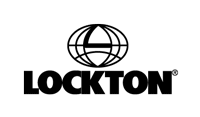 Author : Stella Sung, Senior Vice President of Head of People Solutions, North Asia, Lockton Companies (Hong Kong) Ltd.
Author : Stella Sung, Senior Vice President of Head of People Solutions, North Asia, Lockton Companies (Hong Kong) Ltd.
Employee wellbeing has been a widely discussed topic over the past year. The pandemic has certainly transformed the way employees think about work. Employee wellbeing is now more important than ever. So, what exactly is employee wellbeing? Today, it has expanded beyond physical health such as gym memberships, yoga classes or health checkup. Physical health is just one piece of the puzzle. It has now been broadened to other area of focuses, particularly in mental, financial, and social wellbeing.
With the pandemic outbreak and various social distancing restrictions imposed, employers realized the need for a holistic approach to wellbeing. However, many organizations still struggle with the time, expertise, and resources to formulate an impactful wellbeing strategy for their employees.
Say No to the One Size Fits All Approach for Wellbeing
There is certainly no one size fits all strategy to wellbeing. Every company differs in terms of its visions, cultures, and characteristics. Managing an increasing multigenerational and diverse workforce brings a set of new challenges to the HR professionals. There are distinct generational differences in how the employees think the benefits package should look like and it could mean something very different to everyone within the workforce.
To implement a successful employee wellbeing program, companies should move away from one-off or ad-hoc wellbeing activities to a holistic strategy which truly embedding wellbeing as part of the organization culture. By focusing on the employee’s needs, businesses require tailored wellbeing programs that look across all dimensions of employee wellbeing and place wellbeing at the center of their total reward & benefits strategies.
A Data-Driven Approach to Wellbeing
The diversity of employee health and wellbeing needs could be overwhelming. Many organizations fail to deliver the right program to their employees and often did not spend their budget in the right places that drives utilization and engagement.
“By leveraging professional knowledge, technology, and data and analytics capabilities, we can promote greater worker resilience and set the stage for long-term organizational success in the industry.”
Data and analytics are essential to enable organization to make sound decision. There is no point of introducing a quit smoking campaign if no one in your organization smokes. At Lockton, we can support our client by using the big data in combination with their internal population data to help our clients to meet their business objectives and improve employee health and well-being through better predictive analytics. By leveraging our relationship with the healthcare providers and expertise in data analytics, we will be able to identify the top underlying health risks within the organization and continuously alter the wellbeing program to fit the evolving needs of employees, and ultimately create impactful total rewards & benefits strategy that resonate with your workforce.
Employee Satisfaction is about Having Options
The “work from anywhere” idea gained traction during the pandemic. Employers and employees were forced to adopt the hybrid workplace. As the great resignation rages, it has left HR leaders with the challenging task of re-thinking how to create a motivated and engaged workforce. To develop a winning strategy in the war for talent, adding choices and flexibility to the total rewards & benefits can significantly improve the employee experience and benefits appreciation which potentially become powerful tools to attract and retain talent in a volatile market.
There is a great connection between flexible working and employee wellbeing. When employees can work remotely, employees do not have to make the commute every workday and getting a couple hours back at the start and end of the day. This allows the employees to adjust their hours to do things that significantly contributes to a greater work-life balance and matters to their life such as simply picking up their children from school or just go for a walk. Flexibility enables employees to have more control over what their job looks like and how it fits into their life.
Apart from a flexible working schedule, employees nowadays are also looking for benefits that suitable for their life stages. Traditionally, there is limited flexibility in terms of the benefits package that provided by the employers. It usually segmented by the level of seniority within the organization. As the workforce becomes more and more diverse, moving to a flexible benefits program can allow employees to design a personalized plan that best meet their unique needs. Moving to a flexible benefits program is not easy. It involves time and efforts to redesign the benefits plan and also require a well-planned employee communication strategy to achieve it.
Putting Wellbeing and Flexibility at the Heart of Employee Strategy
Employers have an important role to play in the future of work. The root of this change is to re-evaluate how to embed employee wellbeing and flexibility into their corporate culture and business strategy. Employee wellbeing is a journey and is not a tick a box exercise.
By leveraging our professional knowledge, technology, and data & analytics capabilities, we can work with the employers every step along the way to make this journey fun and less complicated. A one-stop solution is all you need to promote greater worker resilience and setting the stage for long-term organizational success in the industry.

